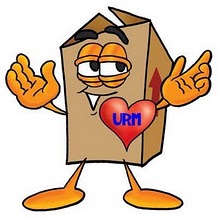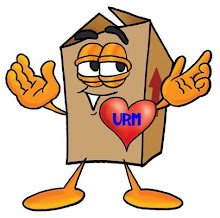Thursday, March 4, 2010
NIGHT ON THE STREET
NIGHT ON THE STREET 2011 will be March 17, 2011 from 6:00-midnight at the River Market West/East Pavilion. We encourage you to join us as we seek to raise awareness of homelessness, domestic violence and addiction. You are invited to participate in this year's event. Please bring your cell phone, laptop, I-Pad and your contacts. You can call, twitter, FACEBOOK with your friends and associates about how they can support the last, least and lost in Central Arkansas through a financial gift to the Union Rescue Mission.
Tuesday, February 16, 2010
Friday, February 5, 2010
Wednesday, February 3, 2010
Homelessness in Arkansas
Homelessness
Large numbers of homeless people live in Arkansas. Looking at data for people who received a funded service, emergency shelter, or transitional shelter from the U.S. Department of Housing and Urban Development (HUD), the Arkansas Management Information System found that 22,000 people were homeless at some point during 2006 in Arkansas. A statewide count on January 24, 2007, of people housed in shelters, along with an observational count on the streets and in camps, determined that 7,400 to 8,000 Arkansans are homeless on any given night.
The Arkansas Homeless Coalition completed a survey in 2005 among the homeless who congregate under bridges and frequent the soup kitchens in the Little Rock (Pulaski County) area. One hundred survey responses documented that forty percent of these homeless persons are engaged in some type of employment. The jobs were minimum wage, part time, or temporary day labor. The same survey documented that twenty-five percent of those surveyed received disability benefits. Veterans make up sixteen percent of those homeless persons receiving disability benefits. The majority of the disabled homeless receive just over $600 per month. They must often choose between medicine, food, or housing. Although those who qualify for supplemental security income are eligible for Medicaid, the co-pay for those served under this program often prohibits their ability to purchase medications, even if the co-pay is as small as five dollars. Hospitals turn homeless patients away for reasons such as prior unpaid co-pays or the inability to pay for service unless they are experiencing a life-threatening event when they present at an emergency room. For homeless people who have the functional capacity to apply for and receive food stamps, the stamps’ value is small, and people on the streets often sell these for a few cents on the dollar. In addition to these barriers, the homeless who are living in shelters or on the streets are often robbed or just do not have the ability to secure money or other items. People who are mentally ill or under the influence of addiction are the most vulnerable among the homeless population.
A variety of problems can cause homelessness, the primary cause being a severe lack of affordable housing in Arkansas for people with low incomes. Secondary causes include mental illness, physical illness, substance abuse, lack of incentive to work, poor work ethic, and lack of appropriate education. In many cases, people are in and out of the homeless system, which includes shelters, hospitals, the streets, and prisons. A deficit of homeless shelters leaves an estimated forty-five percent homeless Arkansans sleeping outdoors, in vacant or abandoned buildings, in cars, and in other locations not meant for human habitation.
Arkansas is experiencing a dearth of affordable housing. For example, professionals and corporate workers have moved to northwest Arkansas to benefit from employment through entities such as Wal-Mart, Tyson Foods, J. B. Hunt, and other Arkansas-based corporations that have created wealth for many of their top managers. In 2005, the average price of a house in this area of the state was $150,000, and the average rent was $579 a month. Affordable housing has been razed to build homes for highly paid executives and professionals that demand more and more in size and quality in the homes they purchase. For people living on slightly more than $600 per month, this is completely out of reach, and thus many people who work in minimum wage jobs are forced to live outside city limits in substandard housing, are homeless, or live in shared housing that is neither private nor safe in many cases. Northwest Arkansas is an extreme example of the lack of affordable housing in the state, but this area has set a standard of housing development that is being followed throughout the state. Downtown warehouses are being renovated into expensive condominiums, and affordable housing communities are being leveled to provide the space for the development of gated housing for the wealthy. Little has been put on the drawing board to ensure that any type of affordable housing is provided as replacement housing for the poor.
Noted from a 2004 University of Arkansas at Little Rock (UALR) study, the services homeless people most need include transportation (seventy-four percent), assistance in locating a place to live (seventy-two percent), and help in finding services or case management (seventy percent). Respondents who reported being chronically homeless as per HUD guidelines were most likely to report needing medical treatment (fifty-seven percent), in comparison to the situational homeless and family units who are experiencing homelessness for a short period of time due to some recent negative event in their life, (forty-two percent and thirty-two percent, respectively). Help with financial credit, dental services, job searches, job training, and a place to go during the day were each indicated as needed by more than half of the sample.
Most people become homeless specifically because they are having a housing crisis, even though they may have other needs for additional services and for increased incomes. Needs for additional services include substance abuse treatment and mental illness stabilization through medication, vocational training, etc. A count of the homeless population in Arkansas for the past five years indicates an increase every year of a minimum of two percent. In 2004, the National Coalition for the Homeless named Little Rock as the meanest city in the United States to the homeless. This designation was based on actions taken by the city to motivate the homeless to leave the downtown area. Actions included destruction of homeless camps and the battering of many homeless persons. In recent years, a shift has occurred among the city leaders. A Mayor’s Commission on Homelessness has been named, and this commission oversaw the opening of a homeless day resource center in North Little Rock (Pulaski County), funded by both Little Rock and North Little Rock, in November 2008. Affordable housing remains the chief means of moving the homeless from the streets, and housing trust funds are being viewed for new legislation to create affordable units for the disabled and the working poor. The media and the public have created this shift from abusing the homeless to creating programs to assist the homeless.
For additional information:
Arkansas Homeless Coalition. http://www.arkansashomeless.org (accessed July 31, 2007).
Arkansas Management Information System. http://www.armis.org (accessed July 31, 2007).
Davis, Andy. “At Forum, Homeless Tell of Life on the Street.” Arkansas Democrat-Gazette. July 12, 2007, pp. 1B, 7B.
Hudson, Stacey. “Group’s Count Finds Rise in Homelessness.” Arkansas Democrat-Gazette. July 21, 2007, pp. 1A, 9A.
Krupa, John. “UA Report Paints Picture of Homeless in State’s NW.” Arkansas Democrat-Gazette. July 18, 2007, p. 9B.
National Coalition for the Homeless. http://www.nationalhomeless.org (accessed July 31, 2007).
Large numbers of homeless people live in Arkansas. Looking at data for people who received a funded service, emergency shelter, or transitional shelter from the U.S. Department of Housing and Urban Development (HUD), the Arkansas Management Information System found that 22,000 people were homeless at some point during 2006 in Arkansas. A statewide count on January 24, 2007, of people housed in shelters, along with an observational count on the streets and in camps, determined that 7,400 to 8,000 Arkansans are homeless on any given night.
The Arkansas Homeless Coalition completed a survey in 2005 among the homeless who congregate under bridges and frequent the soup kitchens in the Little Rock (Pulaski County) area. One hundred survey responses documented that forty percent of these homeless persons are engaged in some type of employment. The jobs were minimum wage, part time, or temporary day labor. The same survey documented that twenty-five percent of those surveyed received disability benefits. Veterans make up sixteen percent of those homeless persons receiving disability benefits. The majority of the disabled homeless receive just over $600 per month. They must often choose between medicine, food, or housing. Although those who qualify for supplemental security income are eligible for Medicaid, the co-pay for those served under this program often prohibits their ability to purchase medications, even if the co-pay is as small as five dollars. Hospitals turn homeless patients away for reasons such as prior unpaid co-pays or the inability to pay for service unless they are experiencing a life-threatening event when they present at an emergency room. For homeless people who have the functional capacity to apply for and receive food stamps, the stamps’ value is small, and people on the streets often sell these for a few cents on the dollar. In addition to these barriers, the homeless who are living in shelters or on the streets are often robbed or just do not have the ability to secure money or other items. People who are mentally ill or under the influence of addiction are the most vulnerable among the homeless population.
A variety of problems can cause homelessness, the primary cause being a severe lack of affordable housing in Arkansas for people with low incomes. Secondary causes include mental illness, physical illness, substance abuse, lack of incentive to work, poor work ethic, and lack of appropriate education. In many cases, people are in and out of the homeless system, which includes shelters, hospitals, the streets, and prisons. A deficit of homeless shelters leaves an estimated forty-five percent homeless Arkansans sleeping outdoors, in vacant or abandoned buildings, in cars, and in other locations not meant for human habitation.
Arkansas is experiencing a dearth of affordable housing. For example, professionals and corporate workers have moved to northwest Arkansas to benefit from employment through entities such as Wal-Mart, Tyson Foods, J. B. Hunt, and other Arkansas-based corporations that have created wealth for many of their top managers. In 2005, the average price of a house in this area of the state was $150,000, and the average rent was $579 a month. Affordable housing has been razed to build homes for highly paid executives and professionals that demand more and more in size and quality in the homes they purchase. For people living on slightly more than $600 per month, this is completely out of reach, and thus many people who work in minimum wage jobs are forced to live outside city limits in substandard housing, are homeless, or live in shared housing that is neither private nor safe in many cases. Northwest Arkansas is an extreme example of the lack of affordable housing in the state, but this area has set a standard of housing development that is being followed throughout the state. Downtown warehouses are being renovated into expensive condominiums, and affordable housing communities are being leveled to provide the space for the development of gated housing for the wealthy. Little has been put on the drawing board to ensure that any type of affordable housing is provided as replacement housing for the poor.
Noted from a 2004 University of Arkansas at Little Rock (UALR) study, the services homeless people most need include transportation (seventy-four percent), assistance in locating a place to live (seventy-two percent), and help in finding services or case management (seventy percent). Respondents who reported being chronically homeless as per HUD guidelines were most likely to report needing medical treatment (fifty-seven percent), in comparison to the situational homeless and family units who are experiencing homelessness for a short period of time due to some recent negative event in their life, (forty-two percent and thirty-two percent, respectively). Help with financial credit, dental services, job searches, job training, and a place to go during the day were each indicated as needed by more than half of the sample.
Most people become homeless specifically because they are having a housing crisis, even though they may have other needs for additional services and for increased incomes. Needs for additional services include substance abuse treatment and mental illness stabilization through medication, vocational training, etc. A count of the homeless population in Arkansas for the past five years indicates an increase every year of a minimum of two percent. In 2004, the National Coalition for the Homeless named Little Rock as the meanest city in the United States to the homeless. This designation was based on actions taken by the city to motivate the homeless to leave the downtown area. Actions included destruction of homeless camps and the battering of many homeless persons. In recent years, a shift has occurred among the city leaders. A Mayor’s Commission on Homelessness has been named, and this commission oversaw the opening of a homeless day resource center in North Little Rock (Pulaski County), funded by both Little Rock and North Little Rock, in November 2008. Affordable housing remains the chief means of moving the homeless from the streets, and housing trust funds are being viewed for new legislation to create affordable units for the disabled and the working poor. The media and the public have created this shift from abusing the homeless to creating programs to assist the homeless.
For additional information:
Arkansas Homeless Coalition. http://www.arkansashomeless.org (accessed July 31, 2007).
Arkansas Management Information System. http://www.armis.org (accessed July 31, 2007).
Davis, Andy. “At Forum, Homeless Tell of Life on the Street.” Arkansas Democrat-Gazette. July 12, 2007, pp. 1B, 7B.
Hudson, Stacey. “Group’s Count Finds Rise in Homelessness.” Arkansas Democrat-Gazette. July 21, 2007, pp. 1A, 9A.
Krupa, John. “UA Report Paints Picture of Homeless in State’s NW.” Arkansas Democrat-Gazette. July 18, 2007, p. 9B.
National Coalition for the Homeless. http://www.nationalhomeless.org (accessed July 31, 2007).
Sunday, January 31, 2010
Night on the Street
The Union Rescue Mission: Nehemiah House/Dorcas House host our annual NIGHT ON THE STREET on Thursday, March 17, 2011 from 6:00 pm until midnight at the River Market Pavilion. We use this as an opportunity to raise awareness of homelessness, domestic violence and addiction in Central Arkansas and especially Little Rock as well as raise financial resources for the Union Rescue Mission operating account.
Individuals who would like to participate should contact the Union Rescue Mission office at 501-370-0808 and ask for Michelle Scroggins or email us @ mscroggins@urmission.org. Each adult participant will be ask to be responsible to raise $1,000 either by contacting their friends, associates, etc or develop a list of team members to assist you. Your friends can donate online @ urmission.org and click on our pay pal account or send their check to Union Rescue Mission, P.O. Box 164057, Little Rock, Arkansas 72216. Whether giving via paypal or sending a check be sure to denote NIGHT ON THE STREET in the memo section of the respective donation vehicle.
You will also have opportunity to distribute blankets, coats, etc. to the homeless along the River near the Broadway Bridge the night of the event. You partnership as a stakeholder allows URM to get the message out to the public as well as raise annual support.
Friday, January 29, 2010
HOMELESSNESS IN AMERICA
Homelessness
On any given night in America, anywhere from 700,000 to 2 million people are homeless, according to estimates of the National Law Center on Homelessness and Poverty.
According to a December, 2000 report of the US Conference of Mayors:
single men comprise 44 percent of the homeless, single women 13 percent, families with children 36 percent, and unaccompanied minors seven percent.
the homeless population is about 50 percent African-American, 35 percent white, 12 percent Hispanic, 2 percent Native American and 1 percent Asian.
According to the 1996 National Survey of Homeless Assistance Providers and Clients (NSHAPC):
single homeless individuals in 1996 reported an average income of $348 during the last 30 days, about 51 percent of the 1996 federal poverty level of $680/month for one person.
28 percent said they sometimes or often do not get enough to eat, compared with 12 percent of poor American adults.
44 percent did paid work during the past month.
21 percent received income from family members or friends.
66 percent of the homeless have problems with alcohol, drug abuse, or mental illness.
22 percent have been physically assaulted.
7 percent have been sexually assaulted.
38 percent say someone stole money or things directly from them.
30 percent have been homeless for more than two years.
On any given night in America, anywhere from 700,000 to 2 million people are homeless, according to estimates of the National Law Center on Homelessness and Poverty.
According to a December, 2000 report of the US Conference of Mayors:
single men comprise 44 percent of the homeless, single women 13 percent, families with children 36 percent, and unaccompanied minors seven percent.
the homeless population is about 50 percent African-American, 35 percent white, 12 percent Hispanic, 2 percent Native American and 1 percent Asian.
According to the 1996 National Survey of Homeless Assistance Providers and Clients (NSHAPC):
single homeless individuals in 1996 reported an average income of $348 during the last 30 days, about 51 percent of the 1996 federal poverty level of $680/month for one person.
28 percent said they sometimes or often do not get enough to eat, compared with 12 percent of poor American adults.
44 percent did paid work during the past month.
21 percent received income from family members or friends.
66 percent of the homeless have problems with alcohol, drug abuse, or mental illness.
22 percent have been physically assaulted.
7 percent have been sexually assaulted.
38 percent say someone stole money or things directly from them.
30 percent have been homeless for more than two years.
Subscribe to:
Posts (Atom)








